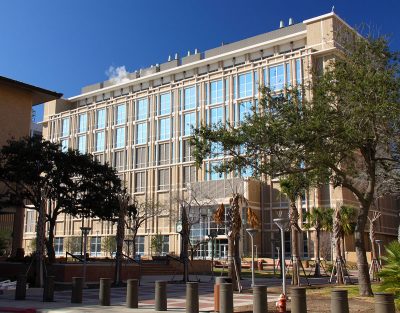Texas Bio-hazard Laboratory Survives Hurricane Harvey

Featured image: Galveston National Laboratory (Source: Wikimedia Commons)
The Galveston National Laboratory (GNL) in Texas, which contains samples of deadly and incurable diseases, has reported itself safe almost a week after Hurricane Harvey struck last week Friday.
Late on Wednesday, the lab said:
“The GNL reported that the facility continued operations without interruption and did not incur any damage, loss of power or bio-containment during the storm.”
There had been a news blackout about the lab since the Category 4 hurricane struck the island of Galveston in the Gulf of Mexico, where the lab is.
Reporters had been unable to reach the island because of severe flooding. The press did not report on the fate of the lab, which had remained silent, failing to reply to an information request from the Independent Foreign Service.
The lab says it has been constructed to withstand a Category 5 storm. But when it was built in 2008, environmentalists raised the alarm. Hurricane Ike, weaker than Harvey, hit Galveston in 2005 and knocked out back-up generators at the University of Texas Medical Branch, where the lab is located.
“The University of Texas should consider locating its biohazards lab away from Galveston Island and out of harm’s way,” Ken Kramer, the director of the Lone Star Chapter of the Sierra Club, said a month before the lab opened in November 2008.
“As destructive as it was, Hurricane Ike was only a Category 2 storm. A more powerful storm would pose an even greater threat of a biohazards release,” Kramer said.
“It’s crazy, in my mind,” Jim Blackburn, an environmental lawyer in Houston, said. “I just find an amazing willingness among the people on the Texas coast to accept risks that a lot of people in the country would not accept.”
Those fears were raised again this week.
Professor Francis Boyle, who drafted the Biological Weapons Anti-Terrorism Act of 1989, said he feared for the lab’s safety.
“As I see it the existential problem is this: What happens if and when the fuel for the back-up generators runs out?” asked the expert in biological weapons. “The negative air pressure that keeps (the) bugs in there ends. And (the) bugs can then escape.”

